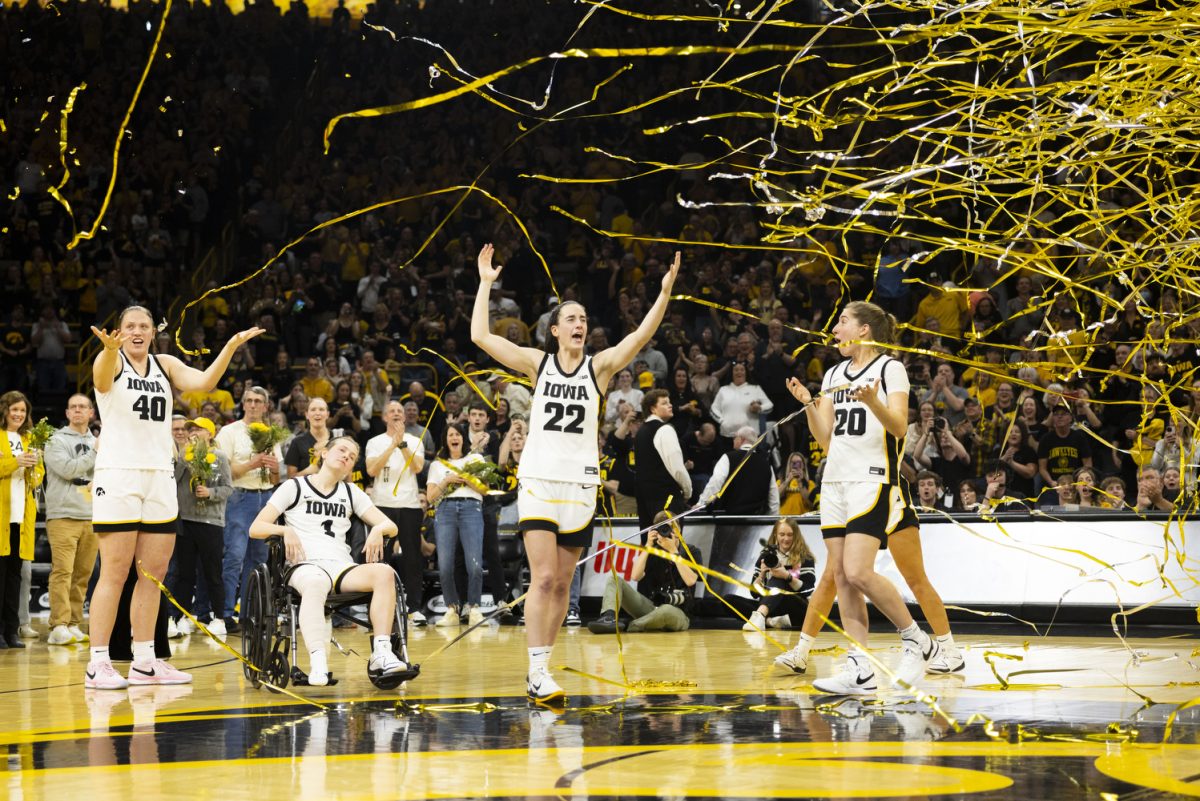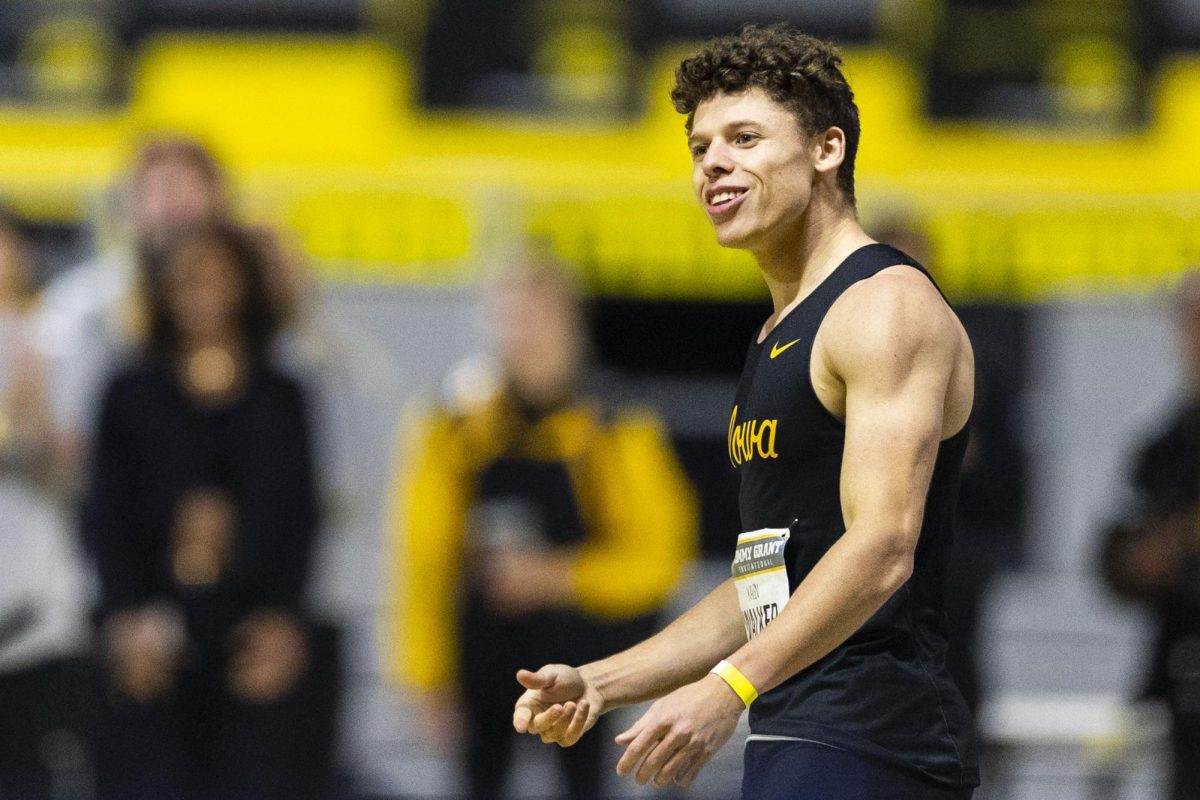Imagine reading about football without knowing what a touchdown is or watching basketball without knowing what a rebound is.
It’s no different in rowing. The sport is more complex than leisurely rowing a boat on a body of water.
“I think some of the things people don’t realize is, they see it from afar, and it looks pretty, and it looks nice, but it’s pretty hard to coordinate everybody,” Iowa rowing head coach Mandi Kowal said.
The sport isn’t all upper body, either. Rowing involves a lot more work with the legs than most people realize, Kowall said.
Communication is important as well.
The most crucial person on the boat is the coxswain, who verbally steers the boat and serves as a coach on the water. Iowa junior Sheila Rinozzi, a coxswain, said her duty is to make sure the eight rowers on her 8 boat work together.
But while she admits rowers have the more physically demanding jobs, she said the coxswain has to know how to get rowers motivated. She faces the challenge of merging everyone’s styles, which creates significant stress.
“I kind of describe [coxswains] as the brains of the boat,” said Rinozzi, who started rowing in high school as a novice.
“When I got into the sport, I knew absolutely nothing about it,” she said. “The first three or four months, everything was completely new and unknown to me.”
In balancing the boats, the 8s are the easiest to handle. The smaller boats are more of a problem.
“[The 4s] are more tippy, so let’s say you’re teaching a kid how to ride with training wheels,” she said. “When they get better with training wheels, you maybe lift them up an inch, so if they tip over either way, they’ll be OK. In a 4, it’s like raising the training wheels two inches.”
Rowers have a variety of races to compete in — match races, head races, and championship regattas.
Head races take place on rivers, and crews are sent off every 10 seconds — essentially becoming a race against the clock for 2 or 31⁄2 miles.
The championship regatta involves numerous boats in the water. Teams are sent off in heats, and the two that post the best times compete in a final to determine the winner.
The fall season is a little different from that in the spring. Autumn is used for practice and as a foundation for spring.
“The championship season is in the spring, so people use the fall for preparation,” Kowal said. “In the fall, you tend to do longer pieces, and some programs row in smaller boats to help with rowing technique. We typically have a little bit more variety in the events we row in the fall.”






